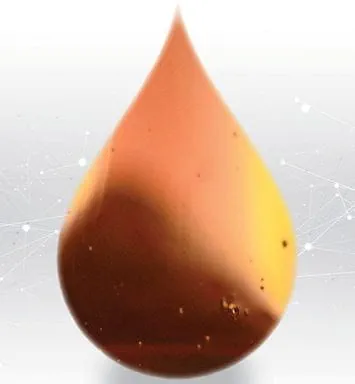The Aramco Hydrocarbon Journey
Drilling: Decades of greenhouse gas mitigation in our operational DNA
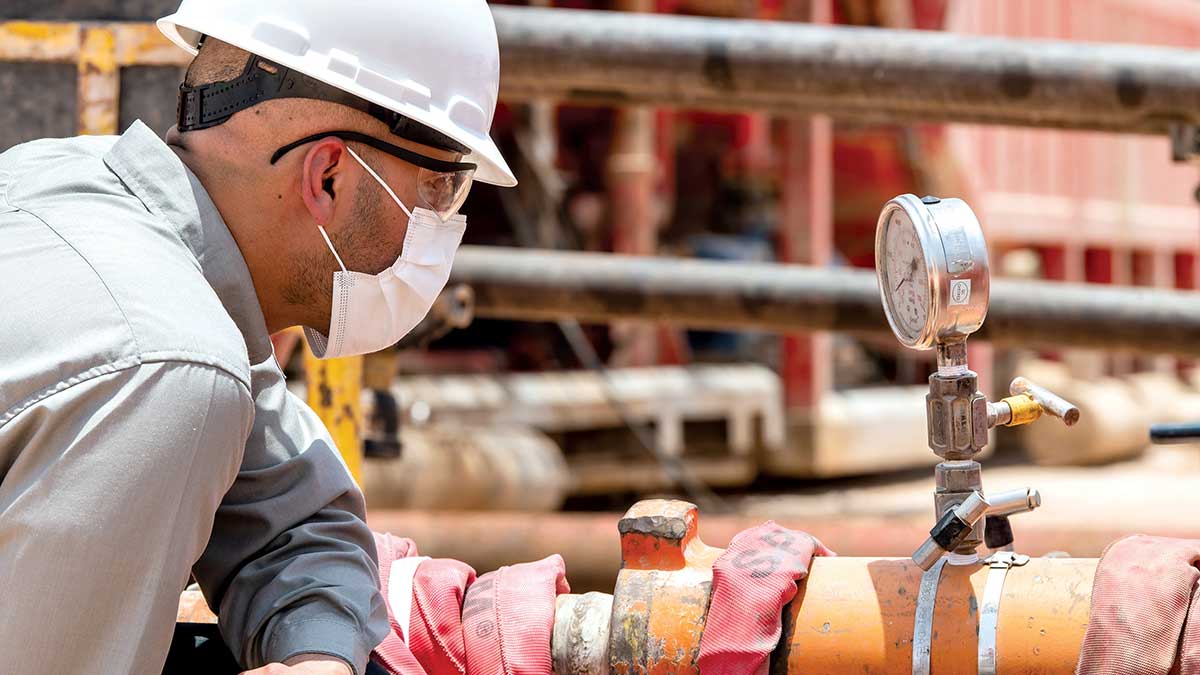
Global August 25, 2021 - By
At Aramco, drilling, the heartbeat of the petroleum industry, involves drilling through layers of soil, rock, salt, and other obstacles, to a reservoir in the layer of Earth known as the Arab Zone.
At 9:45 a.m., hydrocarbons flowed safely into 70 meters of a temporary 3-inch pipe lying on the scorched June summer sands of the southern ad-Dahna desert.
Years ago, the pipe’s contents — the first portion of gas associated with a well’s new production of crude oil — may have been flared. While the pipe will flow under the blazing sun for only a few hours, its successful connection from drilling rig ADC-45 to the wellsite’s production manifold flow line, is the culmination of a process planned weeks in advance.
Recovering well hydrocarbon gases and oil from a well’s restorative flow back is a technique requiring high expertise, and particular attention to safety.
Significantly, a gas tie-in is a substantive greenhouse gas mitigation action Aramco applies to suitable drilling operations, when it is safe to do so.
Emissions-free natural gravity
Drilling rig ADC-45 has been temporarily erected to attend to the needs of well KHRS-590.
Tucked alongside desolate rolling sand dunes in a 10,000 m2 fenced off site, the sleeping well has a production problem.
Oil well fluids — oil, dissolved gas, salty water and some hydrogen sulfide — are typically under pressure from thousands of compacted rock formations trapping them in a reservoir underground. Drilled in 2016, the pressure of well KHRS-590 has dropped, and Drilling and Workover crews are working to restore well production.
For drilling and workovers, having all hydrocarbons flow smoothly and safely to the production line achieves zero flaring.
— Saad S. Garni
Aramco primarily uses reservoir pressure for its crude oil production — no pumpjacks sit atop the company’s reservoirs — as gravity, free from nature, is also free from emissions.
Natural underground pressure can decrease over time. If a reservoir’s pressure needs a helping hand, the company may inject desalinated seawater, or use other approaches, around the edges of the reservoir, under the oil to give it an upward push up toward the wells.
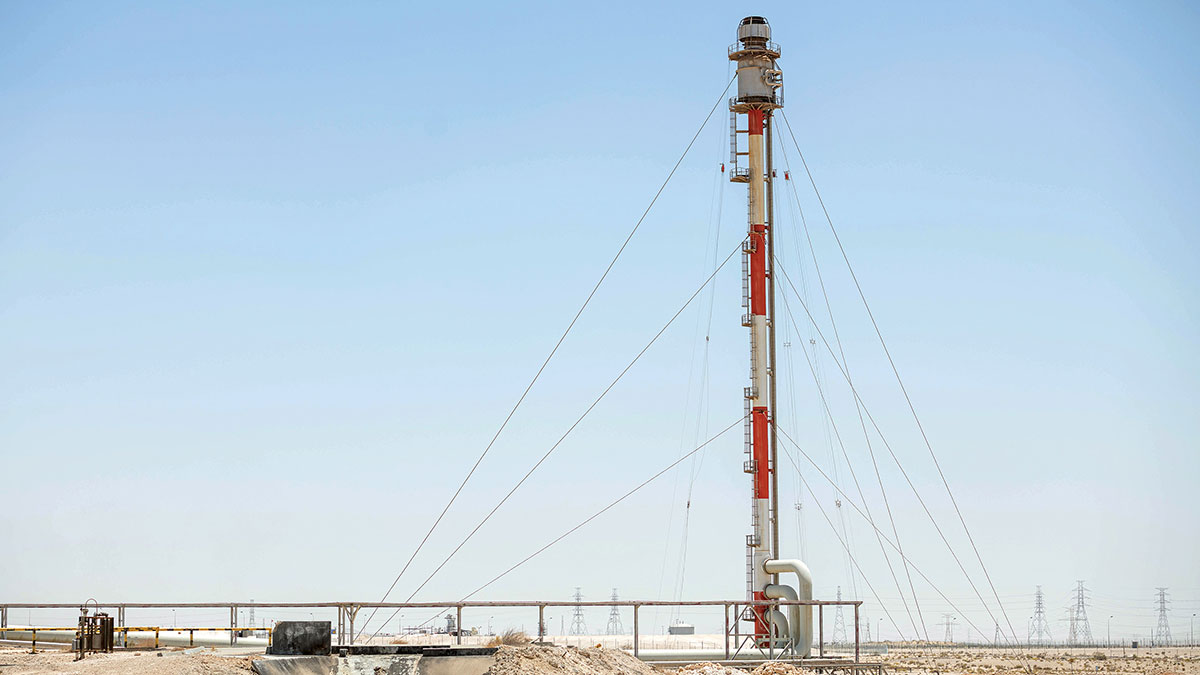
Restoring well pressure with zero flaring
The hydrocarbons flowing through the flow back tie-in pipe — secured against any pressure surge — means the well’s pressure has been successfully reestablished.
Flaring used to be the safest way to deal with the pipe’s gases, which pose a hazard to people working on a drilling workover.
Today, a flare minimization plan is in place. Innovation and methodical management now means the hydrocarbon is gathered, instead of wasted.
Foreman Saad S. Garni, meticulously managing the well’s tie-in, says zero flaring initiatives are an important environmental action.
“For drilling and workovers, having all hydrocarbons flow smoothly and safely to the production line achieves zero flaring,” he said.
“Flaring is a waste of assets for the company, and impacts the environment.”
Garni cautioned that careful planning and execution was needed to gather the hydrocarbons from a flow back operation, and ensuring that all safety precautions were in place.
“I am responsible for people’s safety and for protecting the environment,” he says thoughtfully. “We work together to an agreed plan, so we can achieve the work objectives safely.”
Intelligent oil wells
The tie-in pipe temporarily flows to the remotely operated production manifold, a neat gleaming nest of pipes, chokes, valves, and flow meters.
Once secure, the flow back pipe is removed, and with the helping hand of an artificial push, well KHRS-590 again flows crude oil directly through the site’s manifold to the company’s Khurais plant for separation and stabilization.
Khurais, an intelligent field, was named a world leading manufacturing facility by the World Economic Forum in 2020 for its futuristic technology. A parallel Khurais digital twin keeps a 24/7 real-time electronic eye on end-to-end operations.
Big data analytics and machine learning monitor each well in the Khurais field, bringing environmental and business benefits of energy efficiency, quicker failure identification, and enhanced reservoir management.
The hydrocarbons flowing through the flow back tie-in pipe — secured against any pressure surge — means the well’s pressure has been successfully reestablished.
Flaring used to be the safest way to deal with the pipe’s gases, which poses a hazard to people working on a drilling workover.
Today, a flare minimization plan is in place. Innovation and methodical management now means the hydrocarbon is gathered, instead of wasted.
Foreman Saad S. Garni, meticulously managing the well’s tie-in, says zero flaring initiatives are an important environmental action.
“For drilling and workovers, having all hydrocarbons flow smoothly and safely to the production line achieves zero flaring,” he said.
“Flaring is a waste of assets for the company, and impacts the environment.”
Garni cautioned that careful planning and execution was needed to gather the hydrocarbons from a flow back operation, and ensuring that all safety precautions were in place.
“I am responsible for people’s safety and for protecting the environment,” he says thoughtfully. “We work together to an agreed plan, so we can achieve the work objectives safely.”
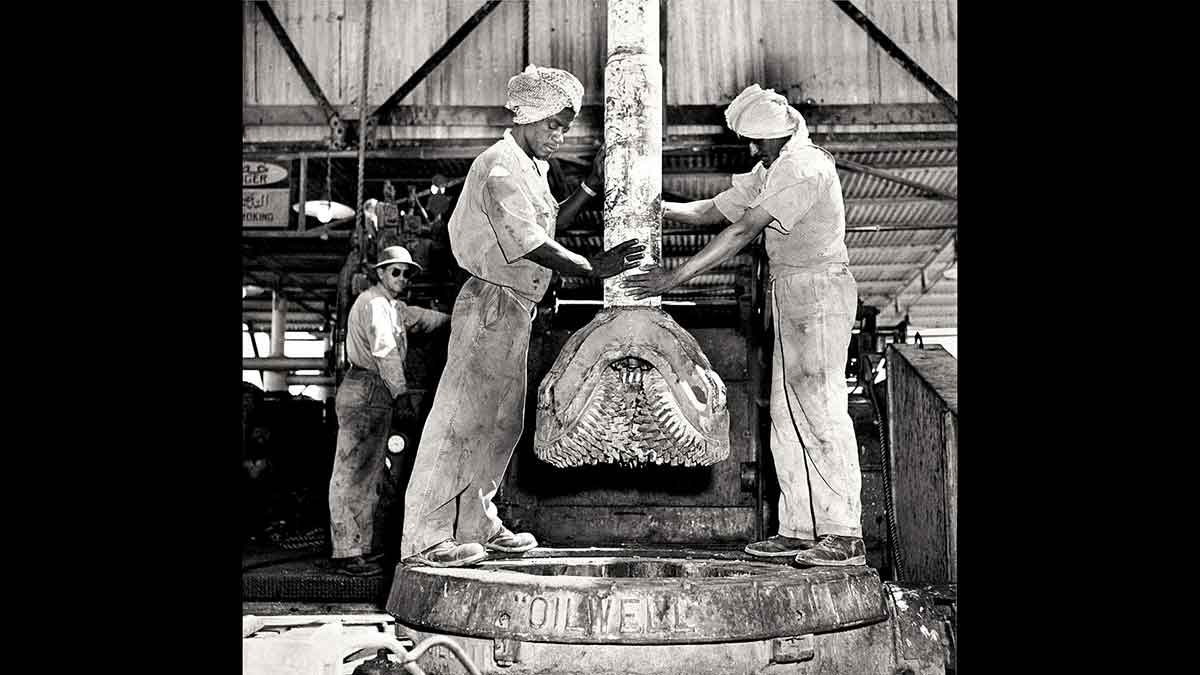
Global fleet working as one team
With more than 200 drilling rigs under its management, Aramco is responsible for one of the world’s largest contracted drilling fleet.
The drilling fleet’s contractors come from across the globe — Middle East, Europe, Asia, the Americas — but work together as one, abiding by Aramco’s global operational standards, which reflect standards like the American Petroleum Institute and the International Standards Organization 9001, 14001, and 45001.
Each Aramco drilling site, operating 24/7 for periods ranging from a few weeks to some months, follows instructions in a drilling program from the company’s drilling engineers, and company health, safety and environmental (HSE) inspectors visit each rig twice a year to conduct intensive HSE compliance checks.
Drilling turning circular
Aramco’s goal is to be a leading company in the circular economy, which includes developing environmentally friendly initiatives to reduce its footprint. The company recently trained and certified more than 1,400 of its employees on the circular carbon economy, and Garni said it was important everyone strived to adopt the principles of circularity.
“Unchecked human activities can waste resources, impacting our planet negatively, and we all need to innovate to take better care of it.”
Drilling fluids — commonly known as “mud” — serve numerous functions in drilling, such as cooling and lubricating the drill bit, controlling formation pressure, cleaning, and carrying out cuttings to the surface.
Unused or reclaimed mud, traditionally a large waste component of drilling, is shared between Aramco drilling rigs.
“When a rig has surplus drilling fluid, other Aramco rigs are notified,” said Garni. “If no rig needs it, it goes into storage at Shedgum or other mud plants for later use.”
When possible, Aramco utilizes fiber from unused local palm date seeds to make an “ARC” plug to seal rock formations in wells while drilling.
Drilling waste is classified, and either recycled or sent to the government and company approved disposal facilities.
Instead of automatic replacement of wellhead equipment and tubulars, they are now inspected, and refurbished for ongoing use.
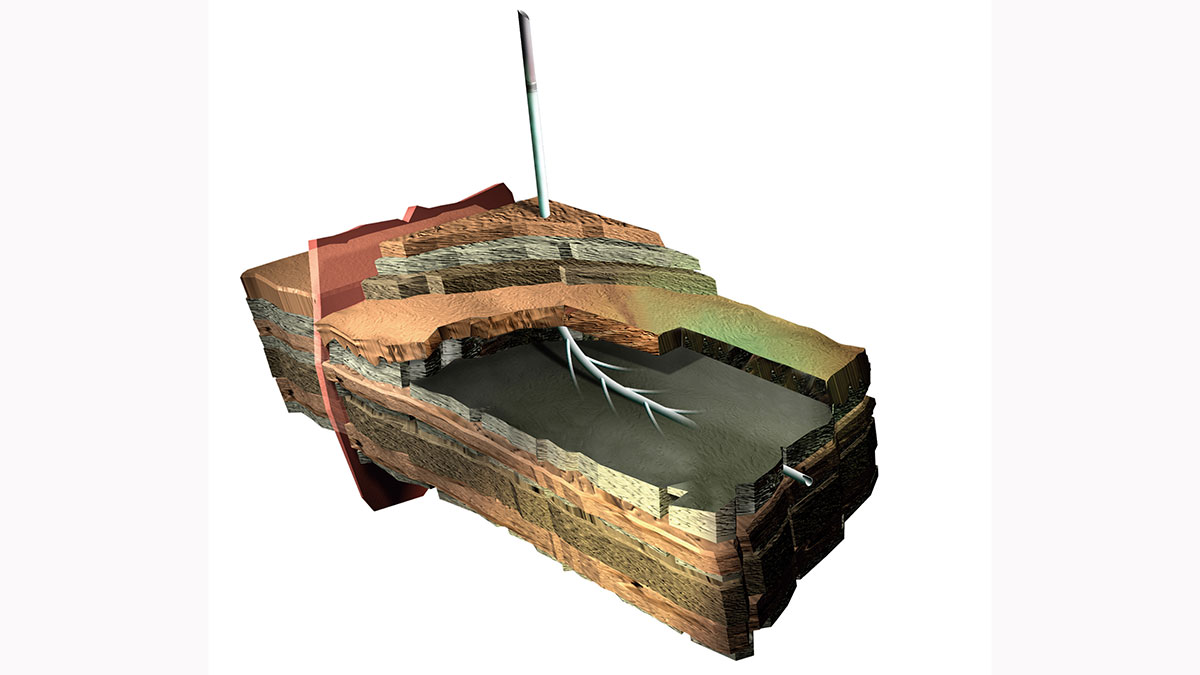
Drilling: Using less for more
Drilling fewer wells in an oil field, but reaching the same amount of crude oil, is a win-win for both the environment and business.
Today, drilling holes curve horizontally off the vertical, and branch off with multiple junctions like branches of a tree known as “multilaterials.”
Aramco began using horizontal drilling in the Berri field in 1991, and Shaybah, developed in the mid-1990s, was the Kingdom’s first oil field to use horizontal and multilateral wells exclusively.
‘Zero Routine Flaring by 2030’
Aramco, a signatory to the World Bank’s “Zero Routine Flaring by 2030” initiative, is recognized as having one of the lowest flaring intensities in the industry.
The company is committed to sharing best practices and knowledge in flaring minimization with peer companies.
Our flare gas recovery systems, asset integrity, energy efficiency, and leak detection and repair programs help mitigate Aramco’s carbon footprint.
Aramco 2020 flaring intensity*
Flaring intensity: 5.95 in 2020; 5.88 in 2019
*Saudi Aramco Annual Report 2020
